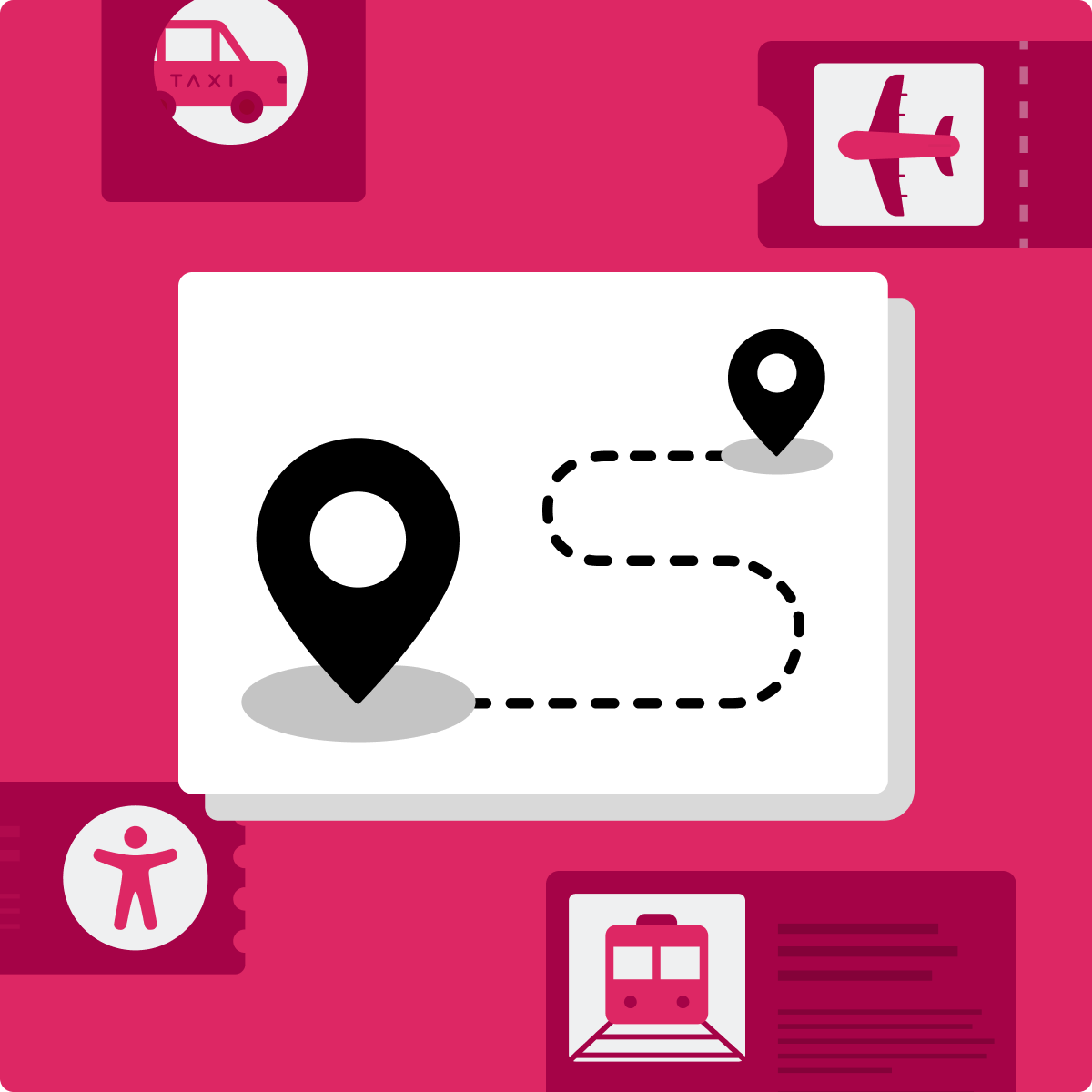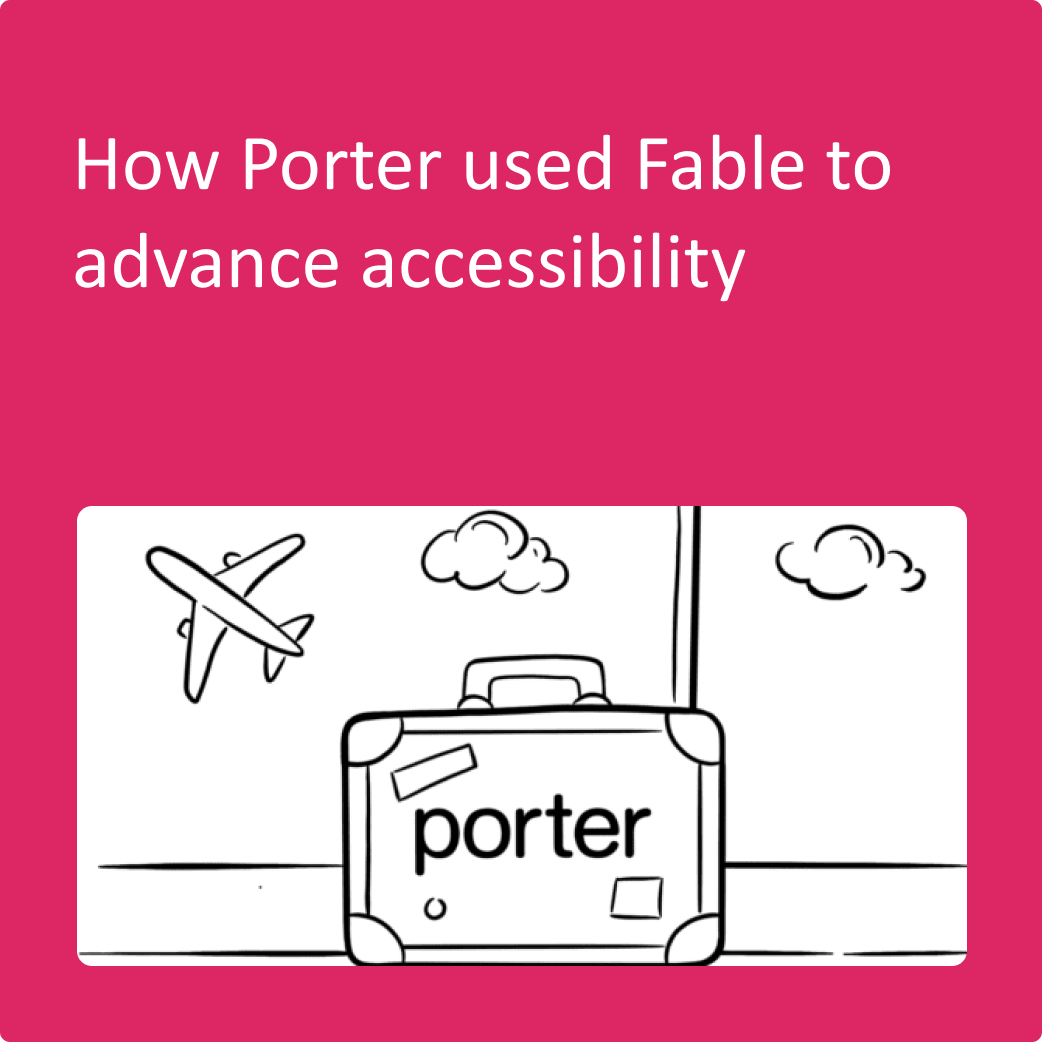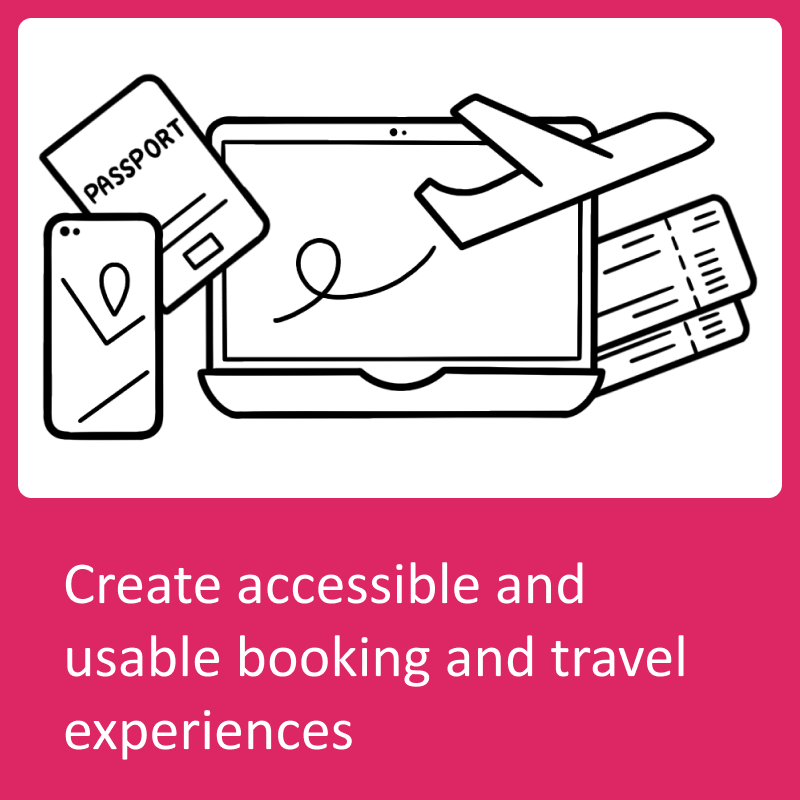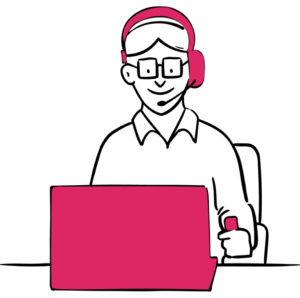Getting started with travel accessibility
Let’s dive into the tactical steps you can take to improve booking and travel experiences for everyone.


Overview
Everyone should have the opportunity to explore the world, visit friends and family, travel for work, and plan any of these experiences with ease. For people with disabilities, the potential frustrations that can present themselves when planning a trip, or travelling, go beyond crowds, delays and inclement weather.
Fable’s travel Insights survey revealed several common themes experienced by people with disabilities as they travel locally, nationally and internationally. We’ve also seen a rise in media coverage where mobility or accessibility devices are returned damaged, or never returned at all.
Companies that make accessibility a priority are creating unforgettable experiences that people will cherish and share for years. For those not yet focused on accessibility, a significant opportunity awaits to tap into an underserved market of travellers that will drive growth across the globe.
Making sure that the state of accessibility of the travel industry improves will require more collaboration with the disability community, including incorporating the voices of people with disabilities into the development process of travel products and services.
This process is all about building muscle and making incremental improvements over time. Here are some common ways to get started including:
Capture an initial baseline
To know what to focus on first, you must know how your digital products are working today. When it comes to travel, the most important user journeys are those that facilitate a travel experience from planning to post-trip.
Some of the most important areas of your product to ensure are accessible would be:
To assess these flows, you can use metrics like task completion rates, or even Fable’s Accessibility Usability Scale (AUS) if you are already aware that these flows are working well functionally for assistive technology users.
Tackle known issues
Once you have established your baseline of accessibility for these key flows, you’ll want to focus on fixing the highest impact issues. When prioritizing your issues and findings, consider the following:
Accessibility is all about “progress towards perfection”, so don’t be afraid to pick certain areas of focus and commit to fixes, rather than letting your backlog pile up.
Improve usability
Once your products are working as expected for assistive technology users, you can start thinking about ways to make the experience even better. Usability testing with assistive technology users will help you answer questions like, how enjoyable was the experience? Did that latest product update make it easier to use? Without metrics, answering these questions is challenging. Fable’s Accessible Usability Scale (AUS) score builds on the System Usability Scale (SUS) to quantify and measure the perceived usability of digital products for assistive technology users.
We’ve seen how brands like Apple, Google and Microsoft have focused on usability and innovation to retain and grow their customer base. People with disabilities show brand loyalty towards companies that have accessible and usable experiences.
Improve usability
Once your products are working as expected for assistive technology users, you can start thinking about ways to make the experience even better. Usability testing with assistive technology users will help you answer questions like, how enjoyable was the experience? Did that latest product update make it easier to use? Without metrics, answering these questions is challenging. Fable’s Accessible Usability Scale (AUS) score builds on the System Usability Scale (SUS) to quantify and measure the perceived usability of digital products for assistive technology users.
We’ve seen how brands like Apple, Google and Microsoft focus on usability and innovation to retain and grow their customer base. People with disabilities show brand loyalty towards companies that have accessible and usable experiences, and will seek other options if the services they need are not accessible.
Measure progress over time
To be able to show your accessibility improvement with confidence, you need to start benchmarking over time. You’ll want to do this once you’ve addressed the accessibility issues you find in your initial baseline tests of those key flows you decided on.
We suggest that you fix at least 80% of the high-severity issues before conducting any repeat testing. From there, the cadence at which you regularly conduct these benchmarks will depend on your product development velocity. Be sure to pick a frequency that makes sense for your team. The most important factor is that you stay consistent and share your progress with others on your journey.
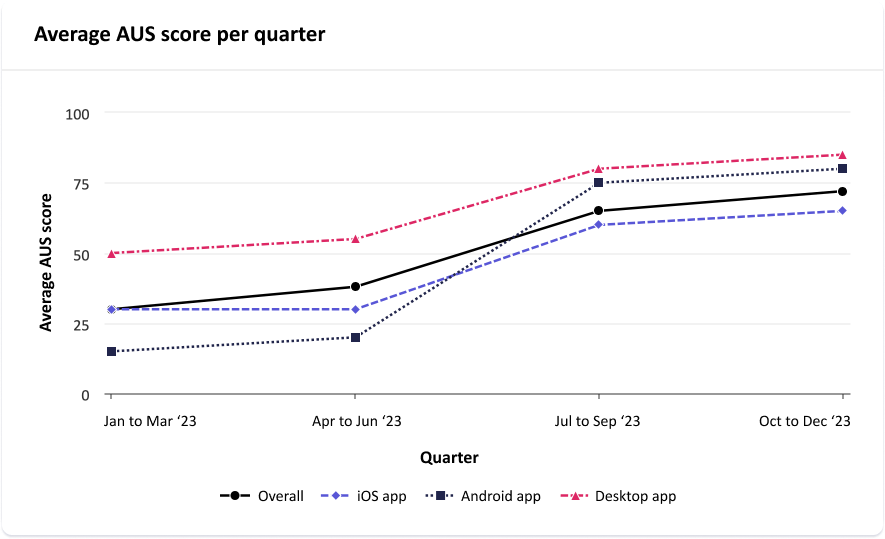
Learn more about making travel accessible
Check out these resources to learn more about the accessibility of travel websites and apps, and how your team can work with Fable to practice inclusive product development.

